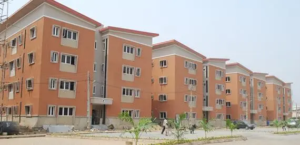Gentrification, a term used to describe the process of urban renewal and the influx of higher-income residents into low-income neighborhoods, has become a topic of heated debate in many cities worldwide. While the revitalization of neighborhoods can bring numerous benefits, it also raises concerns about the impact on existing communities and housing affordability. In this article, we will explore the effects of gentrification on local communities and discuss strategies to address its challenges while promoting inclusive urban development.
Understanding Gentrification
Gentrification typically starts with the migration of wealthier individuals and families into neighborhoods with affordable housing and a unique cultural character. These newcomers invest in property renovations and commercial development, gradually transforming the area’s aesthetic and socioeconomic landscape. As the neighborhood undergoes positive changes, property values rise, and businesses catering to higher-income residents begin to replace local establishments.
Effects on Local Communities
- Displacement of Long-Term Residents
One of the most significant concerns associated with gentrification is the displacement of long-term, low-income residents. As property values increase and rents rise, existing residents may find it challenging to afford their homes and are forced to move to more affordable areas. This can lead to the loss of community ties and social cohesion.
- Changing Demographics
Gentrification can alter the demographics of a neighborhood. The influx of higher-income residents may lead to a shift in the racial, ethnic, and cultural composition of the area, potentially eroding its historical identity.
- Strain on Local Services
As neighborhoods gentrify, the demand for improved infrastructure and services increases. While these enhancements benefit the community, they can also strain existing resources and lead to higher property taxes, potentially burdening long-term residents.
- Loss of Affordable Housing
The conversion of affordable housing units into upscale properties can reduce the availability of affordable housing options for low-income families. This lack of affordable housing may exacerbate housing affordability challenges and contribute to a rise in homelessness.
Addressing Gentrification Challenges
- Affordable Housing Initiatives
Cities can implement affordable housing initiatives, such as rent control, inclusionary zoning, and affordable housing development mandates, to preserve affordable housing options for low-income residents and mitigate displacement.
- Community Land Trusts
Community land trusts are nonprofit organizations that acquire and hold land for the benefit of the community. By using land trusts, cities can maintain control over land use and ensure long-term affordability for residents.
- Equitable Development Policies
Cities can adopt equitable development policies that focus on inclusive growth, community engagement, and equitable access to resources. Such policies can foster collaboration between developers, residents, and local authorities to achieve balanced revitalization.
- Rent Stabilization
Rent stabilization policies limit the annual rent increase for existing tenants, providing stability and protection against sudden spikes in rent.
- Preserving Cultural Heritage
Efforts to preserve the cultural heritage and historical significance of neighborhoods can help maintain a sense of community and identity amidst urban renewal.
Gentrification presents a complex and multifaceted issue that impacts local communities and housing affordability. While urban revitalization can bring positive changes and economic growth to neglected areas, it also raises concerns about the displacement of long-term residents and the loss of affordable housing. To address these challenges, cities must adopt a comprehensive approach that combines affordable housing initiatives, community land trusts, equitable development policies, rent stabilization, and cultural preservation efforts. By striving for balanced and inclusive urban development, cities can foster vibrant and diverse communities while promoting housing affordability and socioeconomic equity for all residents.


